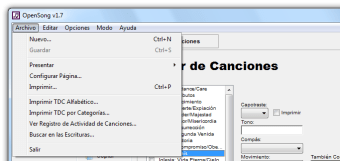

BARCELO Research Professor Department of Environmental Chemistry IIQAB-CSIC Jordi Girona 18-26 08034 Barcelona SpainĬOMPREHENSIVE ANALYTICAL CHEMISTRY FOOD CONTAMINANTS AND RESIDUE ANALYSISĥ1 Edited by ´ YOLANDA PICO Laboratori de Bromatologia i Toxicologia Facultat de Farmacia Universitat de Valencia Av. Caruso University of Cincinnati, Cincinnati, OH, USA Hendrik Emons Joint Research Centre, Geel, Belgium Gary Hieftje Indiana University, Bloomington, IN, USA Kiyokatsu Jinno Toyohashi University of Technology, Toyohashi, Japan Uwe Karst University of Mu¨nster, Mu¨nster, Germany Gyo¨rgy Marko-Varga AstraZeneca, Lund, Sweden Janusz Pawliszyn University of Waterloo, Waterloo, Ont., Canada Susan Richardson US Environmental Protection Agency, Athens, GA, USAĮdited by ´ D. Printed and bound in Hungary 08 09 10 11 12 10 9 8 7 6 5 4 3 2 1ĪDVISORY BOARD Joseph A.
Overlay video opensong verification#
Because of rapid advances in the medical sciences, in particular, independent verification of diagnoses and drug dosages should be made British Library Cataloguing in Publication Data A catalogue record for this book is available from the British Library Library of Congress Cataloging-in-Publication Data A catalog record for this book is available from the Library of Congress ISBN: 978-9-6 ISSN: 0166-526Xįor information on all Elsevier publications visit our website at All rights reserved No part of this publication may be reproduced, stored in a retrieval system or transmitted in any form or by any means electronic, mechanical, photocopying, recording or otherwise without the prior written permission of the publisher Permissions may be sought directly from Elsevier’s Science & Technology Rights Department in Oxford, UK: phone (+44) (0) 1865 843830 fax (+44) (0) 1865 853333 email: Alternatively you can submit your request online by visiting the Elsevier web site at and selecting Obtaining permission to use Elsevier material Notice No responsibility is assumed by the publisher for any injury and/or damage to persons or property as a matter of products liability, negligence or otherwise, or from any use or operation of any methods, products, instructions or ideas contained in the material herein. Logically structured and with numerous examples Food Contaminants and Residue Analysis will be valuable as reference and training guide for post-graduate students, as well as a practical tool for a wide range of experts: biologists, biochemists, microbiologists, food chemists, toxicologists, chemists, agronomists, hygienist, and everybody who need to use the analytical techniques for evaluating food safety.Įlsevier Radarweg 29, PO Box 211, 1000 AE Amsterdam, The Netherlands Linacre House, Jordan Hill, Oxford OX2 8DP, UKįirst edition 2008 Copyright r 2008 Elsevier B.V.
Overlay video opensong how to#
This book can be a practical resource that offers ideas on how to choose the most effective techniques for determining these compounds as well as on how to solve problems or to provide relevant information. A wide range of toxic contaminants and residues, from pesticides to mycotoxins or dioxins are examined, including also polychlorinated biphenyls, polycyclic aromatic hydrocarbons, N-nitrosamines, heterocyclic amines, acrylamide, semicarbazide, phtalates and food packing migrating substances. Topics, such as conventional chromatographic methods, accommodating clean up, and preparing substances for further instrumental analysis, are encompassed with new analytical techniques that have been developed, significantly, over the last few years, like solid phase microextraction, liquid chromatography-mass spectrometry, immunoassays, and biosensors.


Overlay video opensong full#
This is followed by full details of relevant EU and USA regulations. The content is initiated by an overview on food safety, the objectives and importance of determining contaminants and residues in food, and the problems and challenges associated to these analyses. Food Contaminants and Residue Analysis treats different aspects of the analysis of contaminants and residues in food, and highlights some current concerns facing this field.


 0 kommentar(er)
0 kommentar(er)
